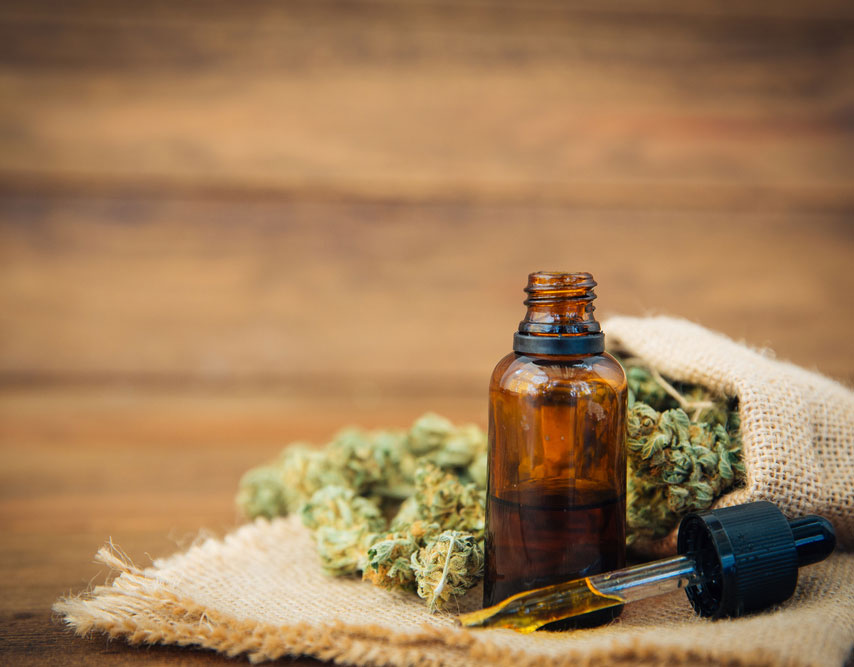With the explosion of products containing hemp-derived CBD in the last few years, many less-than-honest players found ways to flood the market with “CBD oil” that is a modern-day equivalent of snake oil—not necessarily dangerous but definitely ineffective. In some cases, a bottle labeled as CBD oil is just a few crushed vitamins and supplements mixed with olive oil.
It seems impossible but there are some companies out there selling CBD oil, promising improved health, less pain and the myriad other claims they make, that is actually synthetic CBD oil—no different from the potentially lethal forms of synthetic cannabis sold on the street.
In November 2018, Consumer Reports (CR) published an article about dangerous chemicals found in popular over-the-counter (OTC) CBD products. Based on testing conducted by Virginia Commonwealth University, CR reported that Diamond CBD, with locations in England and the U.S., sells CBD products made by three popular companies over the Internet that contain a compound called 5F-ADB, which is a synthetic form of cannabis also found in K2 and Spice.
Drug Overdoses in the U.S.
The Centers for Disease Control tracked all fatal drug overdoses from 1999 to 2017, and in that time it reported a four-fold increase in ODs. In addition to tracking the number of deaths due to overdose, the CDC keeps tabs on which drugs are responsible for them. Unheard of in 1999, overdoses from synthetic cannabis—both marijuana and CBD—is now keeping pace with ODs from benzos and opioids. Stories abound of swaths of people—most between the ages of 12 and 30—being rushed to emergency rooms, suspected of overdosing on synthetic cannabis.
Mainstream media began reporting more widely about the increase of synthetic cannabis use in 2015, with an uptick between late 2017 and mid-2018 as usage really took off. However, the National Institute on Drug Abuse says synthetic cannabis use dates back to 2008. In fact, it claims 11,406 visits to emergency rooms in the U.S. during 2012 were the result of synthetic cannabis.
What Is Synthetic Cannabis?
Synthetic cannabinoids are created in a lab and bear no chemical resemblance to the cannabis plant. It’s a group of chemical substances that are supposed to mimic the effects of the natural cannabinoids found in the cannabis plant. These synthetic products have been cleverly marketed as safe or harmless products, or even as safer alternatives to real cannabis.
No two types of synthetic cannabis are the same, and in most cases the chemical makeup is unknown. It’s estimated there are hundreds of compounds that can potentially go into creating these synthetic products. To the untrained eye, it’s easy to see how someone could be fooled into believing a synthetic is the real deal.
Synthetic cannabis is generally a mixture of different plants, spray painted green. Four telltale signs that your cannabis is fake include:
- The package has what looks like ground-up plant material rather than cannabis buds.
- You’ll notice a chemical smell. Cannabis—regardless of the strain—has a distinct smell and it smells like something you’d find in nature.
- Real cannabis has a stickiness to it, thanks to naturally occurring resin. After handling the fake stuff, your fingers won’t be sticky.
- Synthetic cannabis is one or two shades of green. Conversely, natural cannabis is green with hints of yellow, red, orange, blue and purple.
What Are the Risks Involved with Synthetic Cannabis?
Although the goal is to have these chemical substances mimic the effects of cannabis, the synthetic versions are highly dangerous and can cause many serious health issues. Because the list of possible chemicals can vary from one street-level manufacturer to another, the risks also vary and are ever-changing. Some health risks include:
- Severe anxiety, agitation and paranoia
- Tachycardia (in excess of 100 beats per minute)
- Hypertension
- Muscle spasms and tremors
- Nausea and vomiting
- Severe bleeding due to blood not clotting
- Poor coordination/gait
- Seizures
- Hallucinations
- Disorientation
- Psychosis
- Suicidal thoughts and behaviors
- Coma
- Death
In addition to being sold in “flower form,” synthetic versions of cannabis are also sold as e-cigarettes and extracts for vaping, such as waxes and oils.
Common Names for Synthetic Cannabis
You’re probably familiar with the names K2 and Spice, but there are other names for synthetic cannabis, and they may vary depending on the region. In some cases the street name may be the same or very similar to real cannabis strains:
- 24k monkey
- Ace of Spades
- Amsterdam Gold
- Atomic Blast
- Atomic Bomb
- Berry Blend
- Big Bang
- Herbal Incense
- Blue Berry Yum Yum
- BrainFreeze
- Buzz Haze
- California Dreams
- Cowboy Kush
- Cobra King Kush
- One Love
- Orange Kush
- Pandora’s Box
- PEP Spice
- OG
- Potpurri (sic)
- Purple Diesel
- Purple Haze
Synthetic Cannabis: Just Say No
If you’re concerned about synthetic CBD, check out the below tips before making a purchase. As always, consult your doctor before introducing CBD to your wellness routine.
Buy from a Dispensary
The safest way to ensure you’re getting real cannabis is to buy from a dispensary. Dispensaries are required by law to sell extracts derived from cannabis plants. Dispensaries can lose their license to sell cannabis and face huge fines if caught. Manufacturers caught making extracts with anything other than cannabis are subject to prison time—even if no one was harmed.
Request the Product Lab Report
No matter where you purchase CBD, you have the right to request a lab report. If the company is unwilling to provide one or insists the information is proprietary, that’s a big red flag.
If you or someone you are with has consumed synthetic CBD, don’t wait for symptoms to appear before seeking medical attention.




